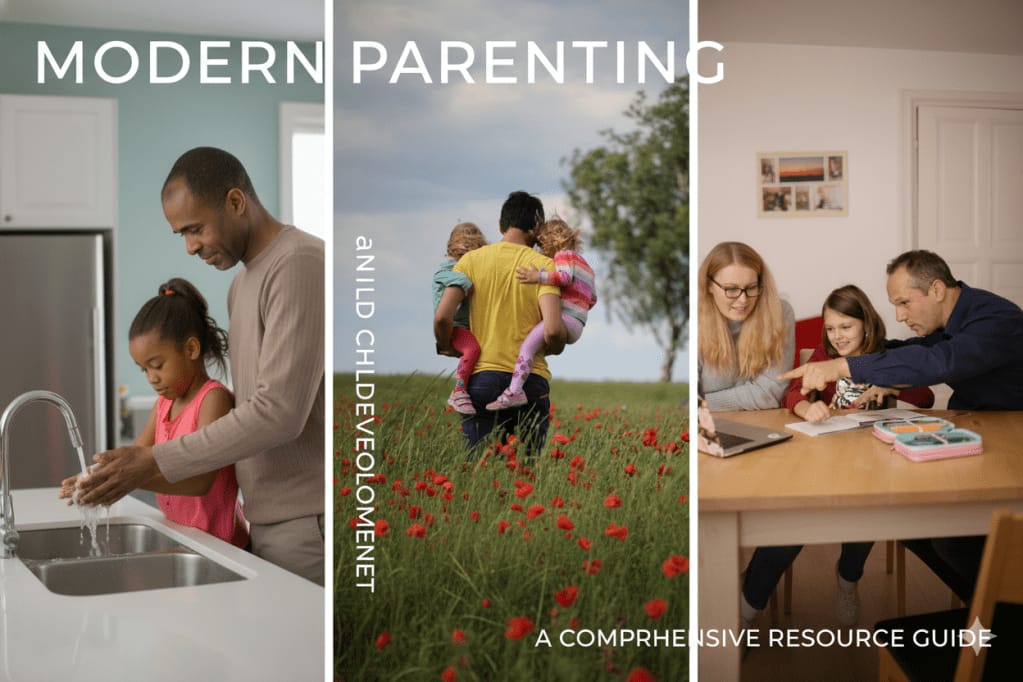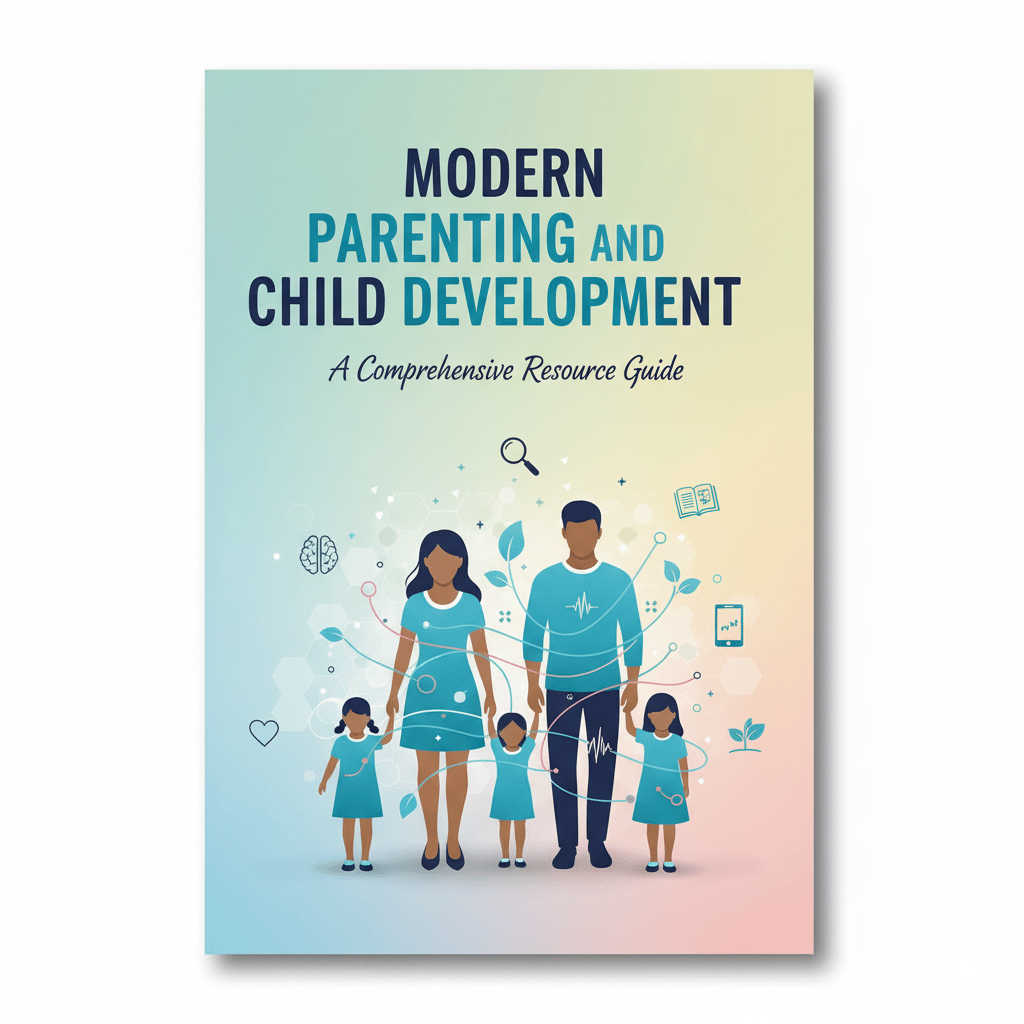- Ark's Newsletter
- Posts
- Briefing Document: Key Themes in Modern Parenting and Child Development
Briefing Document: Key Themes in Modern Parenting and Child Development
Executive Summary
This document synthesizes key insights from multiple sources on the complex dynamics of parenting and its impact on child development. The analysis reveals five critical themes. First, the quality of the parental relationship, especially the level of marital conflict, is a paramount factor in a child’s cognitive, socioemotional, and behavioral outcomes, with research suggesting that high-conflict environments can be more detrimental than divorce. Second, parental self-care and self-compassion are not indulgent luxuries but foundational necessities for effective parenting; they reduce parental stress, improve well-being, and model healthy coping mechanisms for children. Third, the establishment of clear, firm boundaries is crucial for a child’s sense of security and emotional regulation. Effective boundaries are defined by consistent parental action rather than requests and should be coupled with empathy for the child’s subsequent feelings. Fourth, parent-child estrangement has emerged as a widespread and profoundly painful phenomenon, driven by a complex web of factors including divorce, mental health issues, perceived parental failures, and the influence of new partners, often resulting in deep, prolonged grief and the loss of contact with grandchildren. Finally, intentional parenting frameworks, such as structured rites of passage, offer a deliberate approach to navigating key developmental transitions, imparting values, and consciously evolving the parent-child relationship over time.

The Foundational Impact of Marital Conflict on Child Development
Research across family psychology and child development consistently demonstrates that the emotional stability of the spousal relationship is directly associated with children’s developmental outcomes. Parental conflict affects children both directly and indirectly, influencing their cognitive-emotional processes and broader family dynamics.
Key Research Findings
• Negative Developmental Outcomes: Children from households with high levels of marital conflict experience negative outcomes in their cognitive and socioemotional growth. Adolescents from these homes are more susceptible to developing psychopathological problems. Research indicates that witnessing such conflict is one of the most significant influences on the development of emotional and behavioral problems.
• Conflict vs. Divorce: Numerous empirical studies have shown that marital conflicts can be more detrimental to children than divorce itself. One 1991 study by Andrew Cherlin and colleagues found that preexisting family dysfunction and conflict explained a substantial portion of the harm to children’s well-being that was previously attributed to divorce alone. Later studies affirmed that the benefits of marriage for children occur mainly in low-conflict families.
• Behavioral Manifestations: Children’s reactions to parental conflict can be categorized into two groups:
◦ Internalizing Behaviors: Inward reactions to stress, including anxiety and social withdrawal.
◦ Externalizing Behaviors: Outward reactions such as disruptive behavior, hyperactivity, aggression, and disobedience. These often begin in the preschool years.
• Modeling and Social Connection: Children who witness aggressive marital conflicts may begin to model this behavior in social situations outside the family. Studies also show that children who experience high levels of marital disagreements are more likely to exhibit difficulties in developing societal connections. Conversely, children from happier marriages with low conflict levels exhibit fewer behavioral problems and greater overall well-being.

The Necessity of Parental Self-Care and Self-Compassion
The immense pressures of raising children—including time constraints, financial responsibilities, and idealized media portrayals of “good parenting”—can lead to parental stress, guilt, and self-criticism. The sources strongly advocate that prioritizing parental mental health through self-care and self-compassion is essential for the well-being of both the parent and the child.
Core Concepts of Self-Care
• The “Oxygen Mask” Analogy: A recurring theme is the necessity for parents to care for themselves before they can effectively care for others. This principle reframes self-care not as selfishness, but as a prerequisite for sustainable and healthy parenting.
• Defining Self-Compassion: Self-compassion is distinct from self-pity or being self-centered. It is defined by three core actions:
1. Noticing one is suffering or feeling bad.
2. Accepting that being human means being imperfect.
3. Being intentional about helping oneself.
• Benefits for Parent and Child: The practice of self-compassion and intentional self-care—any activity bringing joy, peace, and wellness—provides a foundation of kindness, strength, and confidence. It helps reduce stress, allows a break from the pressure of perfection, and, crucially, leads to more positive parent-child attachments with better outcomes for children.
• Modeling Healthy Behavior: TEDx speaker Liz Carlile emphasizes that “selfishness,” redefined as self-care, is critical. After experiencing postpartum darkness, she found that prioritizing running and journaling transformed her into a more joyful and engaged mother. She notes, “your children who we all know watch every single thing that you do are watching this – they’re modeling their behavior from what they observe.” By actively taking care of themselves, parents teach their children to do the same.
Establishing Effective Boundaries: Frameworks and Philosophies
Setting clear and consistent boundaries is presented as a cornerstone of effective parenting, providing children with a sense of safety and security. The sources offer both a modern psychological framework and a more traditional disciplinary philosophy for this practice.
Defining and Implementing Boundaries
According to Dr. Becky Kennedy, a boundary is not a request but a statement of action. A true boundary is “what we tell someone we will do and they require the other person to do nothing.” This shifts the responsibility from the child to the parent.
This approach ensures the parent acts as a “sturdy leader,” which children need when they lack the skills to inhibit their own urges.
The Psychology of Boundaries
• Children’s Need for Safety: The sources posit that children fundamentally crave boundaries. Deep down, children are constantly asking, “Am I real and am I safe?” Boundaries answer the safety question by showing a child that a capable adult is in charge and will not let things get out of control. This sense of being protected is vital, as a boundaryless environment is terrifying for a child.
• The Partnership of Boundaries and Empathy: Setting a boundary often leads to a child’s emotional distress, such as crying or screaming. This is where empathy becomes a crucial partner to the boundary. The process for teaching emotion regulation is:
1. The parent holds the boundary (e.g., takes the remote).
2. The child feels their feelings (e.g., gets upset).
3. The parent validates the feeling (“Oh, you really wanted to watch another show.”). This process affirms the child’s internal experience as real while maintaining the necessary limit.
• The “Bad Guy” Philosophy: An article by Gregory M. Elwell presents a more direct argument, stating that “Sometimes parents need to be ‘bad guys’.” This view holds that parents should not be afraid of their children’s anger or resentment and must be willing to be “the boss.” Discipline, including spanking as a form of negative reinforcement, is framed as a necessary tool to teach children the difference between right and wrong and to establish that “no means no.”
The Crisis of Parent-Child Estrangement
The phenomenon of adult children cutting off contact with their parents is a source of profound and complex grief. An extensive collection of personal testimonies reveals the multifaceted nature of estrangement, its devastating impact, and the diverse factors that contribute to it.
Perceived Causes of Estrangement
Parents and a few estranged children cite a wide array of reasons for the breakdown of the relationship:
• Family History: Parental divorce, ongoing conflict, substance abuse, mental illness, and a family history of estrangement are common backdrops.
• Influence of Third Parties: The arrival of new partners—spouses, step-parents, or the adult child’s significant other—is frequently identified as a catalyst, creating division and loyalty conflicts.
• Parental Behavior: Adult children may cut ties due to perceived parental flaws, such as being controlling, overbearing, critical, emotionally abusive, or failing to respect boundaries. Some parents acknowledge making “terrible errors of judgment.”
• Disagreements and Life Choices: Conflicts over finances, lifestyle choices, religion, and major societal issues (like COVID-19 vaccinations) have triggered estrangements.
• Communication Breakdown: A key theme from the perspective of estranged children is the feeling of being unheard for years. One commenter, Faith, noted that parents often claim to have “no idea why” estrangement occurred, even after the child has repeatedly tried to communicate their hurt and requested changes in behavior.
The Impact on Parents
• Profound Grief: Estranged parents consistently describe their pain in extreme terms, likening it to a “living death,” having a “missing body part,” or dying from a “broken heart.” The lack of closure makes the grief particularly difficult to process.
• Loss of Grandchildren: A major source of anguish is the loss of contact with grandchildren, with grandparents feeling robbed of a cherished role and the children denied a relationship.
• Health Consequences: The chronic stress and emotional turmoil of estrangement can lead to severe physical and mental health issues, including depression, anxiety, and in one reported case, congestive heart failure.
• Coping and Support: Parents struggle with whether to continue reaching out or to respect the boundary and “let go.” Seeking support through therapy, grief groups, and online forums is a recommended and frequently utilized coping strategy.
Models for Purposeful and Intentional Parenting
Purposeful parenting involves creating a deliberate, structured framework for raising children, with a focus on marking key life transitions and imparting core values. Jason T. Smith’s “Purposeful Parenting Plan” serves as a detailed model of this approach.
Key Milestones and Transitions
• Age 13 Rite of Passage: This is a major milestone designed to celebrate a boy’s entry into young adulthood.
◦ Structure: A weekend trip involving the son, his best friends and their fathers, grandfathers, uncles, and other important male mentors.
◦ Purpose: To “pay it forward” by benefiting the son’s peers, positively influence his social circle, and publicly state expectations about manhood, relationships, finances, and responsibility.
◦ Ceremony: Adult men share advice, scripture, or memories. The son learns to respond formally with a thank-you speech. He receives symbolic gifts like a mobile phone and a key to the house.
• Age 15 Mission Trip: The mother takes the child on a one-on-one mission trip to a country experiencing extreme poverty. This is designed to be an intensely personal experience that teaches generosity, perspective, and responsibility, as the teen is involved in the planning and logistics.
• Age 18 Transition to Adulthood: This milestone acknowledges the legal shift to adulthood. The parenting style explicitly transitions from being a coach to being a consultant, where advice is offered but not imposed. The parent-child relationship is redefined to reflect the child’s new freedom and responsibility.
• Age 21 Final Celebration: This marks the final formal celebration of adulthood, reinforcing that the individual is now fully responsible for their own actions and their consequences.
The overarching principle of this model is that love is demonstrated through the intentional investment of TIME. These planned events are punctuation marks in the context of committed, loving, everyday parenting.
